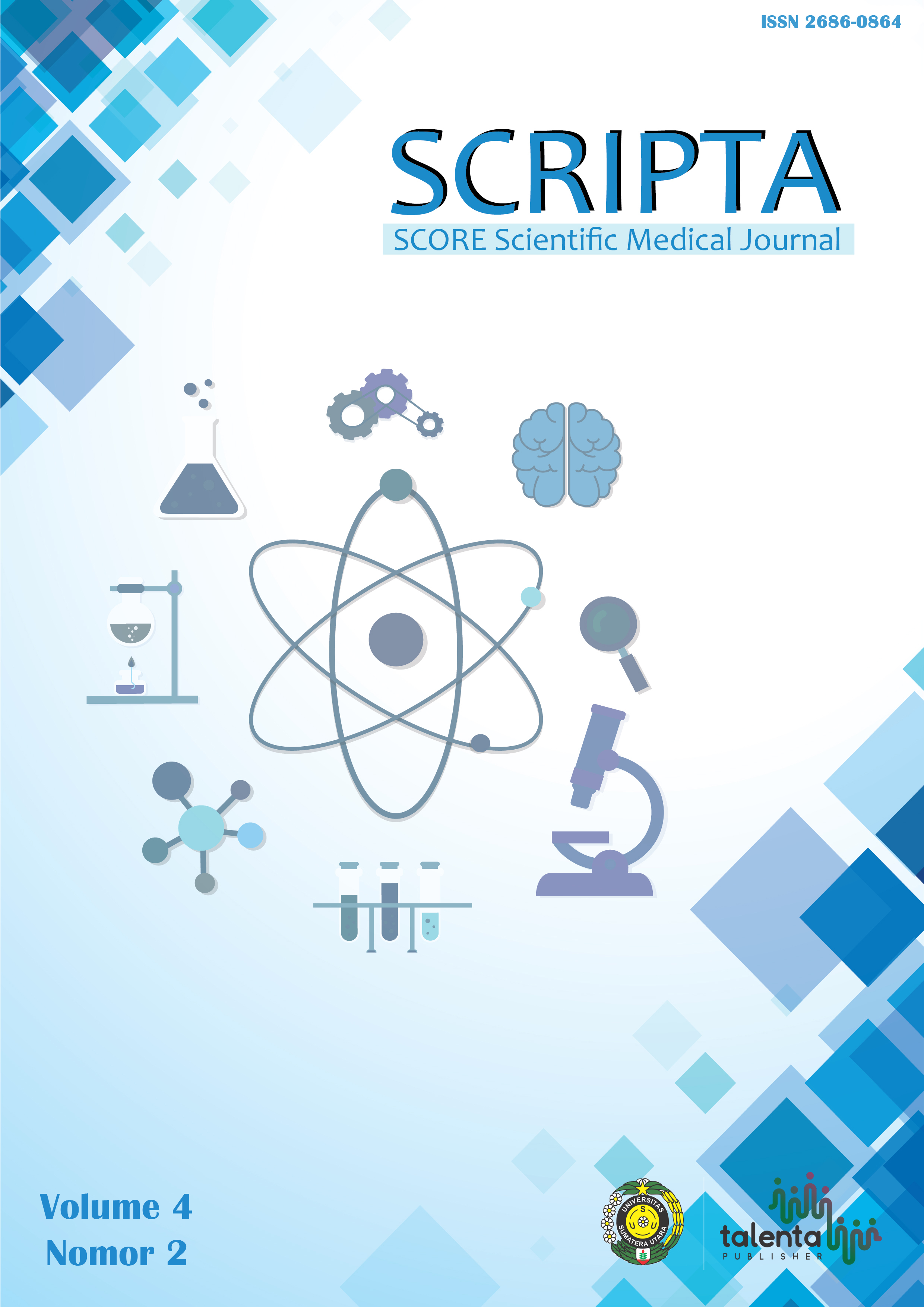Pemanfaatan Alkaline Phosphatase sebagai Novel Biomarker Deteksi dalam Diagnosis Osteoporosis selama Pandemi COVID-19
DOI:
https://doi.org/10.32734/scripta.v4i2.10656Keywords:
Biomarker, Bone Turnover Markers, Osteoporosis, Young, Alkaline PhosphataseAbstract
Osteoporosis is a bone disorder characterized by reduced bone mass density so that bones become brittle and increase the risk of fractures. It develops slowly over several years and is often only diagnosed when a fall or sudden impact causes a bone to break (fracture). The incidence of osteoporosis always increase every year and it is estimated that patient with osteoporosis in Indonesia will increase to be 300 millions people in 2050. One of several ways to diagnose osteoporosis is through specific biomarkers that marked formation, resorption and reulation during bone remodeling processes. Various biomarkers are now available for specific and sensitive assessment of the rate for bone formation and bone resorption. For example, the bone formation biomarkers are total alkaline phosphatase (ALP), bone-specific alkaline phosphatase (BALP), osteocalcin (OC), procollagen type 1 N-terminal propeptide (P1NP) and procollagen type 1 C-terminal propeptide (P1CP). Moreover, the decrease of total ALP has been demonstrated with the treatment with alendronate from 79.7 U/L to 64.8 U/L. This literature review is aimed to discuss the utilization of alkaline phosphatase as a novel detection biomarker in the diagnosis of osteoporosis during the COVID-19 pandemic. The literature based on journal searching related to the topic such as, PubMed, Science Direct, and Google Scholar. Researcher have obtained the basis of the disease, the underlying mechanism explains and the detection, through the specificity researcher can see how it may be effective as a biomarker, and the comparison may reveal it’s potential and how it compares to other biomarkers.
Downloads
Downloads
Published
How to Cite
Issue
Section
License
Copyright (c) 2023 Muhammad Abi Ghoffari Siregar, Dyne Soraya Lathifah, Nafisya Maharani Anvi

This work is licensed under a Creative Commons Attribution-ShareAlike 4.0 International License.
Authors who publish with SCRIPTA SCORE Scientific Medical Journal agree to the following terms:
- Authors retain copyright and grant SCRIPTA SCORE Scientific Medical Journal right of first publication with the work simultaneously licensed under a Creative Commons Attribution-NonCommercial License that allows others to remix, adapt, build upon the work non-commercially with an acknowledgment of the work’s authorship and initial publication in SCRIPTA SCORE Scientific Medical Journal.
- Authors are permitted to copy and redistribute the journal's published version of the work non-commercially (e.g., post it to an institutional repository or publish it in a book), with an acknowledgment of its initial publication in SCRIPTA SCORE Scientific Medical Journal.














